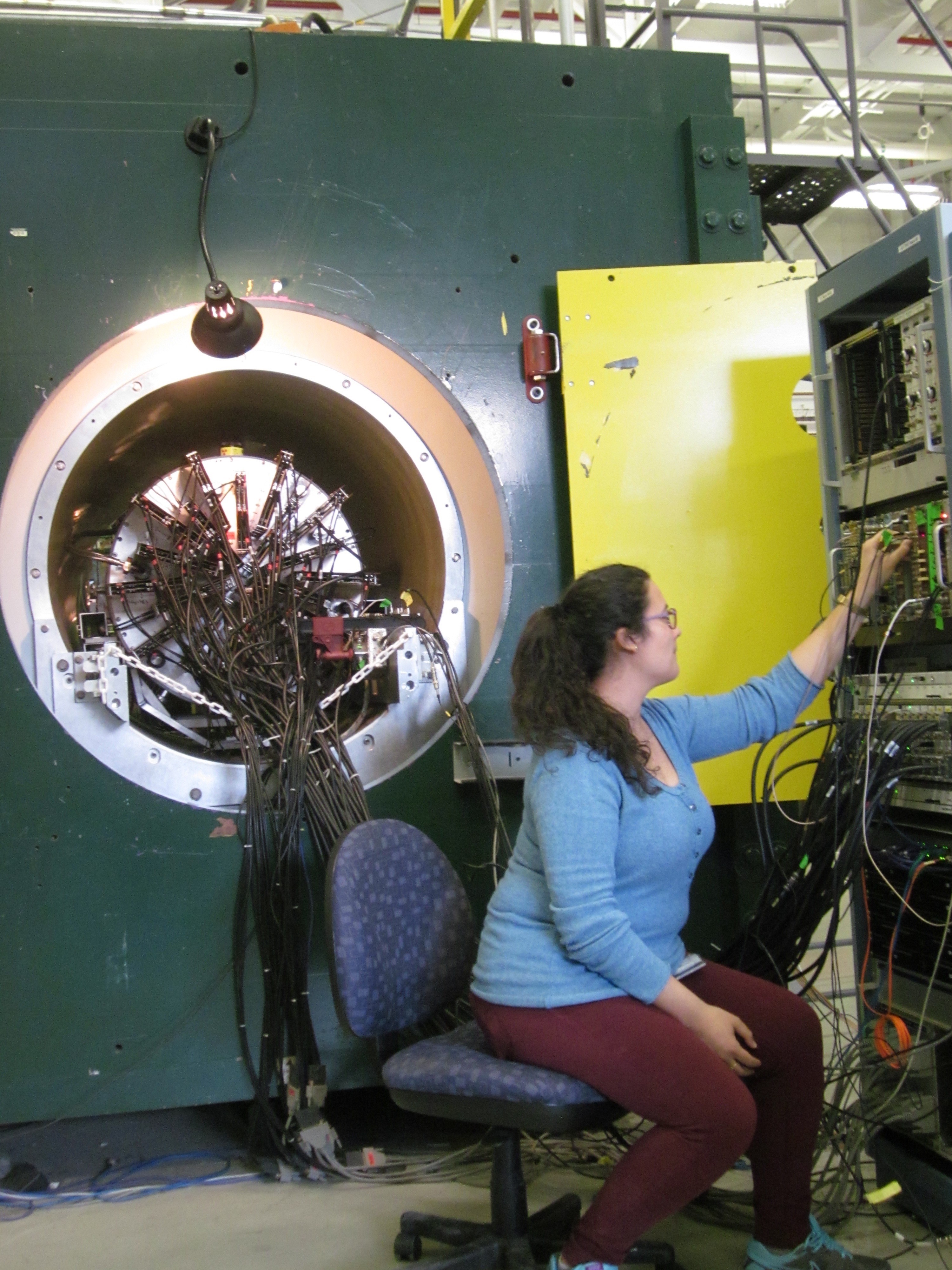Looking Through the Isobaric Mirror
Reactions that add or remove a proton or neutron from a nucleus are a powerful way to probe wave functions of individual nucleons. A standard tool is the (d,p) reaction where a neutron is transferred from the deuteron to the nucleus of interest.
Proton elastic scattering off a nucleus, populating the so-called isobaric analog states, related to isospin symmetry of the strong force, is an alternative method. At NSCL/FRIB, we can now perform such experiments using rare-isotope beams scattering off protons and detecting the scattered protons by 3D imaging of their tracks using a novel detector called the AT-TPC (Active Target Time Projection Chamber).
The aim of such first experiment with a rare-isotope beam was to study the evolution of the N=28 neutron shell gap in neutron-rich nuclei.
The investigations of neutron wave functions in Ar47 from the study of analog states populated in 46Ar+p proton scattering (Phys. Lett. B 778 (2018) 155-160) is the first result obtained with this method on a medium mass radioactive nucleus, and the first scientific result from the re-accelerated beam program at NSCL/FRIB. The experiment used an Ar46 radioactive beam produced from the projectile fragmentation of a Ca48 stable beam at the Coupled Cyclotron Facility. The fast Ar46 beam was then stopped in a gas cell, before being re-accelerated at the ReAccelerator facility ReA3 to an energy of 4.6 MeV/u and transported to the AT-TPC. The result obtained shows that the core Ar46 is more strongly modified by adding the extra neutron than expected.
This successful experiment with ReA3 and AT-TPC opens up a large part of the nuclear chart far from stability for such studies. They can now be performed with a beam intensity as low as 1,000 particles per second.


Figure 1: The photo shows Clémentine Santamaria next to the AT-TPC detector and electronics. The AT-TPC detector is placed inside a large bore solenoidal magnet that applies a magnetic field inside the active volume of the detector. The plot shows a typical proton scattering event recorded by the AT-TPC: the proton is emitted from the reaction vertex location and follows an helicoidal trajectory as it is slowing down in the gas volume and bent by the action of the magnetic field. The blue spiral is the 2D projection of the trajectory on the sensor plane of the AT-TPC.



